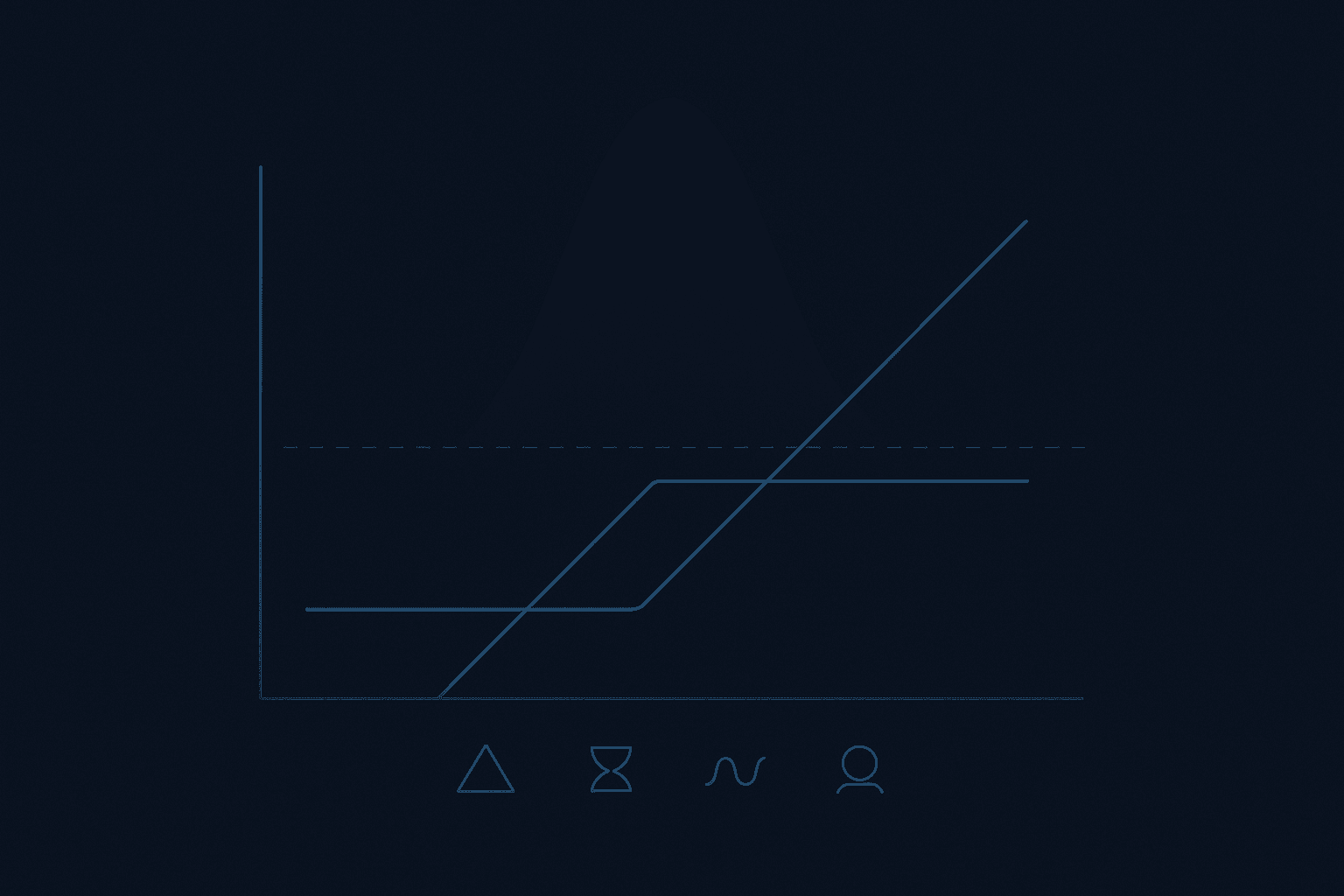
EuropeanRisk–neutralContinuous dividend yield (q)Closed-form
Options Pricing & Greeks (Black–Scholes)
Get theoretical price, Δ, Γ, Θ (per calendar day), Vega (per 1%), Rho (per 1%), break-even and a payoff chart. If you know the market premium but not σ, leave it blank and provide the option price—the calculator solves implied volatility and updates all outputs.
Inputs
0%
−20%0%+20%
Θ is per calendar day. Vega/Rho are per 1% change. Current moneyness: ATM.
We use the dividend-yield variant (terms scale with e−qT) and show Θ per calendar day. Greeks and prices follow closed-form Black–Scholes.
Educational use only — models are estimates; markets include skew/smile and American exercise/discrete dividends not captured by B-S.
Quick how-to
- Choose Call or Put; set S, K, days, r% and q%.
- Enter σ% for theoretical results, or leave σ blank and enter a market premium to solve IV.
- Use payoff shading, P(ITM), and the what-if slider to explore scenarios.
Outputs
Theoretical Price
2.49
Implied Volatility
— %
Delta
0.54
Gamma
0.069228
Theta (per day)
-0.045
Vega (per 1%)
0.1138
Rho (per 1%)
0.0423
Break-Even @ Expiry
102.49
What-if (temporary)
S at +0%
100
Theoretical Price (what-if)
2.49
Δ (what-if)
0.54
Γ (what-if)
0.069228
Θ/day (what-if)
-0.045
Payoff uses the premium you provided (market price if entered; otherwise theoretical).
Spot (S) Strike (K) Break-evenGreen = profit, Red = loss at expiry